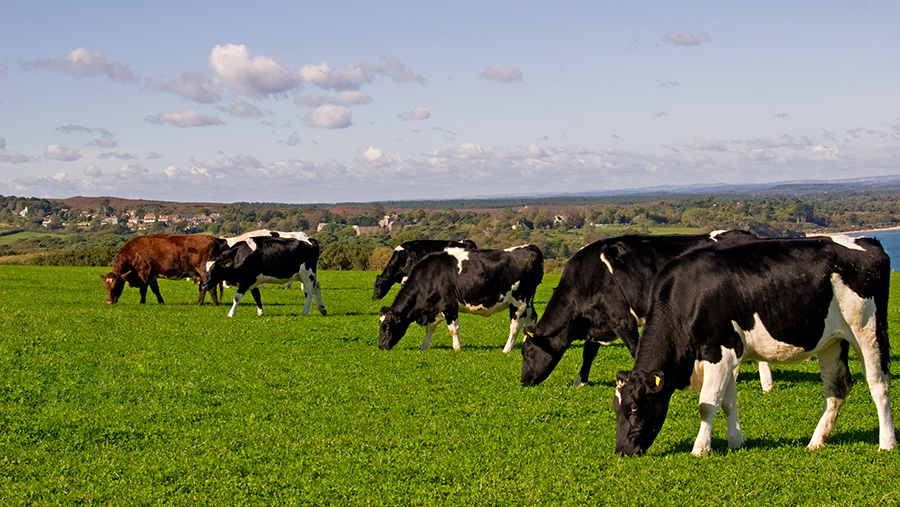Top tips when expanding your farm business
Expanding a business is exciting but brings challenges that cannot always easily be anticipated. It’s abouts so much more than checking that the numbers stack up – there will be practical and logistical challenges too.
Hamish Bichan and Angus Bell of consultant Active Business Partnerships outline some of the main areas to watch out for when taking a farm business to the next level, including the need to keep everything under review.

© Nicholas and Sherry-Lu Aldridge/FLPA/imageBROKER/REX/Shutterstock
Potential margin
- Be realistic about the potential margin achievable on additional land or other new enterprises – base your costings on realistic five-year yield averages for that land type, not on national averages or what you achieved on other land
- Look for likely hidden costs with new land, for example, weed issues, drainage, lime, logistics
- Debate and agree all fixed costs included in any contract farming account
- Ensure additional acreage does not detract from performance on the existing unit – this is a real danger
See also: Low milk prices challenge dairy expansion plans
Scale and capacity
- Machinery size and capacity will dictate the optimal scale for your business – assess existing capacity to establish what surplus may be available for additional land. Each machine in your current fleet will have its own level of surplus capacity
- Expanding without sufficient capacity will result in reduced crop output if the work is not done on time, again, a real risk
- Overcapacity will result in a cost structure that the additional land can’t justify
- Work towards a restructured fleet with enough capacity and factor in insurance capacity for difficult years
- Consider alternatives, for example would surplus capacity in people or machinery be more profitably employed working for others?
Costs
- From existing business accounts, work out the marginal costs required to work additional land
- Work out your existing costs of production and those of your expanded business to confirm the benefits of expansion
- What is the least cost of achieving additional operational resources – consider contractors v hire v doing the job yourself
- Talk to the bank in good time about additional working capital or longer term funding for strategic investments
- Don’t forget to increase depreciation on existing machinery that you are relying on to do more work. Depreciation is not just an accounting entry – it is the reality of HP repayments of machinery replacements
- Match machinery HP payments so the term suits the economic life and the timing suits the business cashflow
- Look at benchmarking not only your costs but also your capacity, to identify strengths, weaknesses and risks.
Staff and management
- Ensure the whole team is on board with your plans – it is likely more work will need to be done with fewer resources. If longer hours or changes in roles/responsibilities and reporting lines are part of the plan, how will that work for all employees? Anticipate any problems so you can consider how to address them before they affect day-to-day operations
- Emphasise the need to maintain standards so output does not suffer at the expense of expansion
- Timeliness will be more important than ever but more of a challenge to achieve in the expanded business – people and machines need to be well organised and ready to go at the first opportunity to make the most of any weather windows
- Make sure your plans are realistic and achievable in a normal year
- Don’t overload your management – be prepared to delegate in your team or to outside partners. For example, grain marketing can be time-consuming so consider developing a strategy with your merchant to balance maximising price with market risk and cash requirements.
Contribution
- Make sure your proposed offer for any additional land will generate positive profit and, more importantly, a positive cashflow
- With current prices it is quite possible that expansion may only be breakeven so the key is to cut your cloth accordingly – make sure your expansion is not subsidised by the existing business
- If you can break even with current prices the business will reap the rewards when prices improve
- Keep accurate financial costings to make sure the bottom line generates adequate reward for the additional financial investment and management input
- Don’t forget to account for the value/cost of your management time in your budgeting
Risk
With additional scale comes additional risk, so assess the impact of the main risk factors: price/exchange rate, weather, yield, operations, costs, competition and results
- Review results annually
- At the same time, look at projections to ensure you are still driving forward
- Look at before and after expansion to see the benefit of results achieved and also to identify changes for further improvements
See more
